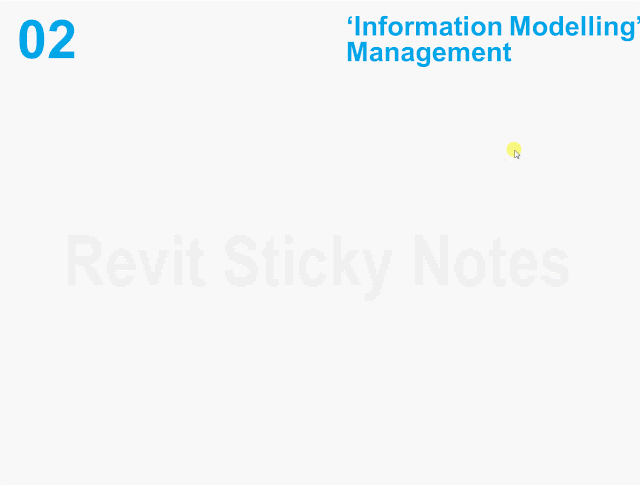In previous post of this series I looked at vector based design/documentation vs object oriented design/documentation and how fundamentally different these two processes are. Now lets take a look at one of the main (and the most important) changes we are supposed to deal with in object oriented design/documentation. To me, and almost everyone involved, it's the holy grail of BIM. Yes, you guessed it correctly. It's the "I" in BIM.
For most of us, "I" in BIM is the deal breaker so I am not surprised to hear one of the major contractors saying "we receive lot of BUMs", Bloody Useless Models. Why? Because they are just getting 3D models and not Information Models.
In our recent meeting at NBS BIM library we spent great amount of time brainstorming on how to get "I" in our BIM models at different stages of the project by different parties. The UK government/RIBA/CPIC and other related organisations are working on a protocol/procedure to define BIM data drops at various stages of a project.
So, where is this conversation leading to? Well, as most of you know, towards COBie! In coming few years we should have better clarity on COBie and roles and responsibilities of each stake holders. In the mean time we need to be ready for "Information Modelling" and changes it brings to our current process/culture.
INFORMATION MODELLING MANAGEMENT
In object oriented design/documentation process everything is object driven and each object has (Information)properties attached to it, Local and Global properties. Ok, we do have properties in 2D vector based design/documentation but mainly graphics properties, i.e. layer/linestyle/color/Coordinates/Length etc. I know we can add attributes to 2D objects in vector based process but how do we manage Local vs Global properties, how do we get "Information Schedule" to drive 2D graphics etc.? The list could go on and on. The bottom line is Information Modelling is practically impossible in vector based process, the main reason why we need object oriented process such as BIM.
In the example shown below, on left hand side we have a specification for a door and on right hand side we have a door object with the specification linked to it's global property. This specification property is available in schedule too, instantly. This is just one of the many "Information" properties expected in objects in true BIM world. Think about Design, Construction, Operation, and Building Information (DCOBie) that need to go with every BIM object. With this comes a requirement for "Information Modelling" management. We need to manage information flow quite carefully if we want to convert BUM into BIM. If you are interested to know more about object's properties I highly recommend looking at COBie spreadsheet.
So, do you think we are ready to deal with Information Modelling? do you think our infrastructure is ready to deal with Information inundation? do you think legal framework is out there to deal with Information Modelling? Answer to all of these questions might be "NO" at this moment in time, who knows. But one thing is definite, BIM is about Information Modelling and is going to call for a massive change in process/culture. We need to start working on this challenge now and be prepared before Information flow starts.


No comments:
Post a Comment